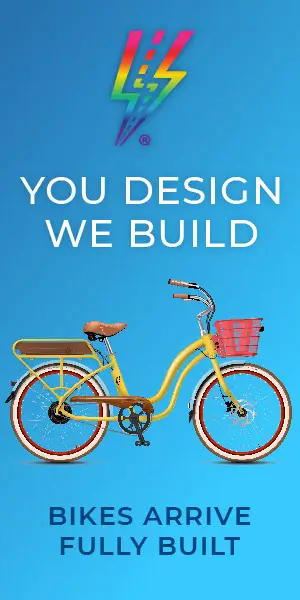An e-bike typically comes with standard bike tires but is already pricier than a regular bike. Yet now the bike shop suggests you pay an additional premium for special tires. But do e-bikes need special tires, and should you shell out the extra money?
E-bikes typically don’t need special tires, but you may prefer them. Compared to regular bikes, e-bikes put additional demands on tires, which manufacturers address in their tire designs. For instance, special e-bike tires use stronger casing, add extra sidewall inserts and more.
Since standard bicycle tires aren’t designed with the needs of an e-bike in mind, they may not perform as well or last as long as they should. After exploring how e-bikes are different, we can explain what these differences mean in tire selection. By the time you get to the end, you can confidently choose between standard or e-bike tires.
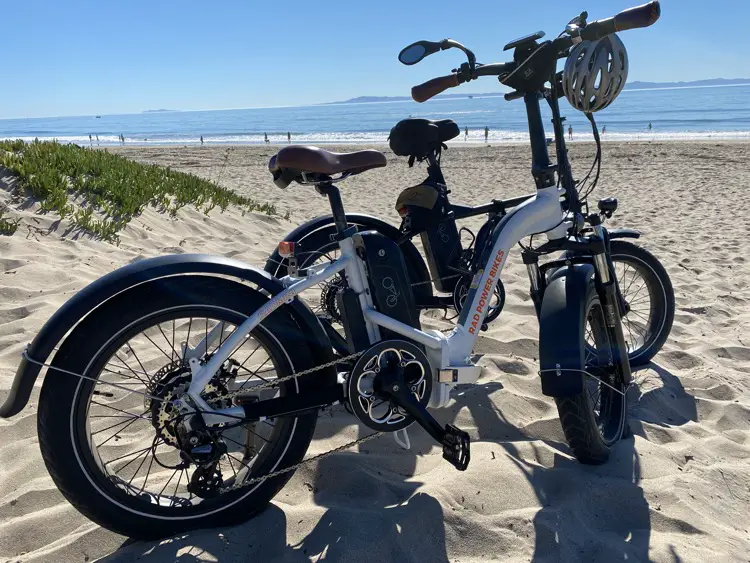
Should I Use Special Tires on an Electric Bike?
You should use special tires on e-bikes because standard tires aren’t designed to withstand the demands of electric bikes. For instance, the extra motor and battery weight put a strain on standard tires which increases tread wear and makes them more susceptible to punctures.
Therefore, e-bikes need stronger and higher-quality tires to support the heavier load.
Electric Bike Tires Vs. Regular Bike Tires
Although electric bikes and ordinary bikes share many features, there are two significant differences between them: maximum speed and weight capacity. These factors affect how a tire performs on an e-bike as compared to the same tires on traditional bikes.
Depending on the classification of your e-bike, most electric motors cut off speed assistance at 20 mph (32 kph) (Class 1 and 2) or 28 mph (45 kph) (Class 3), although riders can get to even faster speeds with greater pedaling effort or if freewheeling downhill.
Due to these high speeds, e-bikes produce far more torque than a standard bicycle. This additional torque adds stress to an e-bike tire.
Riders frequently point out that e-bikes’ top speeds are over-hyped, as many experienced riders can ride as fast as an electric bike. While possibly true, e-bikes reach this speed carrying extra weight from the motor, battery, and thicker frame, which impacts the tire’s overall performance.
Since they can depend on motor power, e-bike riders often ride faster for longer than they would on a regular bike. Unfortunately, this also increases the wear and tear on the e-bike’s tires and reduces their puncture protection.
To address these demands, electric bicycle tires are designed differently. For example, sidewall casing will be constructed to handle the additional wear and tear. It’s often made of stronger, more expensive material and has a higher thread count per inch (TPI) for a thicker and more durable weave. In addition, there are often additional sidewall inserts and enhanced puncture-prevention layers.
When considering an e-bike’s tire, we focus on the tread because that’s what we see. However, the components hidden underneath the tread are just as important.
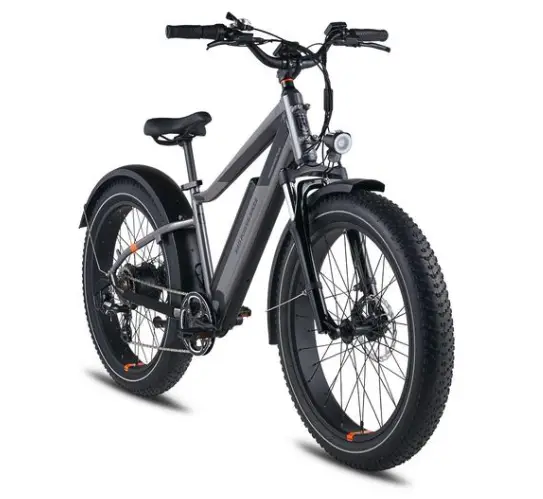
Hidden Components of a Tire
The two hidden components of a bike tire are its beads and carcass. No matter how electric bike tires are designed or what material is used in their construction, those hidden components play an essential role in their performance and durability.
The part of the tire where the lip meets the rim is known as the tire bead. It forms and maintains the seal between the tire and the wheel and helps the tire keep its shape.
A tire has two beads, one on either side, which is only visible on an unmounted tire. Each bead has a wider profile since the rubber strands inside are made of metal or fibers.
Steel is often used because it’s less expensive. Synthetic materials, like Kevlar, manufacture stronger beads, but that strength comes with higher prices. Steel is rigid and heavier, but flexible strands are easier to install and remove. They are also lighter.
The carcass is considered the most critical part of the tire. It’s a layered network of meshes that sit under the tread. Each mesh consists of tiny textile fiber strands often made from nylon. These fiber strands are woven together and play a significant role in determining tire strength.
Thread count measures the number of threads per inch (TPI) of the carcass. Tires with a high TPI count offer better handling, control, and performance. However, higher TPI means more material and more material means higher cost.
How Do I Know What Tires to Buy for My E-Bike?
Bicycle wheels come in various sizes, ranging from small 12-inch (30.48 cm) to huge 29-inch (73.66 cm) diameter tires. The wheel size has a significant impact on the performance of e-bikes.
However, your electric bike’s frame determines the tire size. For example, you cannot put 16-inch (40.64 cm) tires on a frame meant for 26-inch (66.04 cm) wheels.
The most critical factor is where and how you ride. In general, it’s best to choose tires that fit the e-bike’s frame and your riding style. Depending on the model, e-bikes may have fat or narrow tires. If you plan on cycling on rugged terrain frequently, fat tires are the way to go. Thin tires, however, are ideal for smooth roads or paved trails.
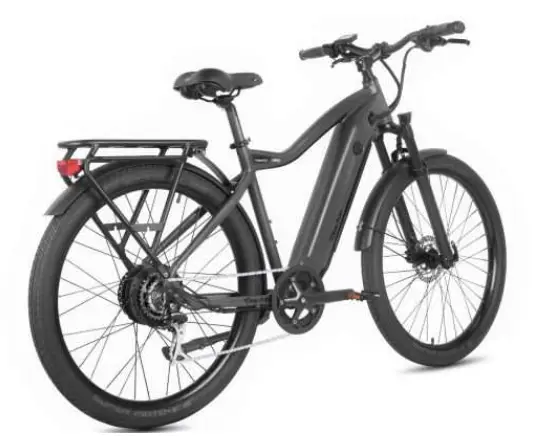
Commuting Bike Tires
Commuter bikes are designed to ride on ordinary hard surfaces such as asphalt or concrete roads but typically have wider tires than traditional bikes designed for commuting.
These wide e-bike tires have a lower PSI requirement that helps them grip the road better. It also makes them easier to maneuver when having to swerve to avoid being hit by another vehicle.
Furthermore, their all-season tread patterns make them safer on wet roads.
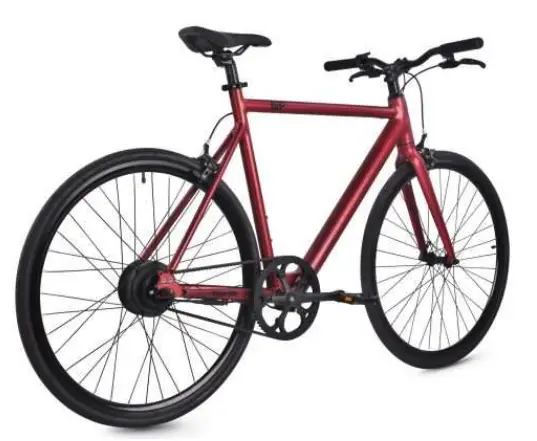
Road Tires
Road bike tires are skinny. With less surface area to touch the road, the decreased friction allows for faster riding. Acceleration also requires less effort since the tires put less pressure on the ground.
Many riders choose road tires for speed and acceleration. However, these tires have an increased risk of slipping, especially on wet roads. If it frequently rains where you live, you might want to avoid road tires.
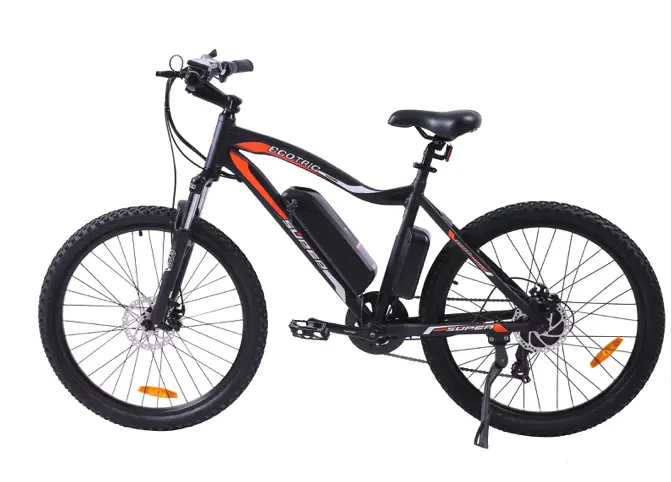
Electric Mountain Bike and BMX Tires
Mountain bike and BMX tires are specialized tires that have rough treads to give them the better traction needed for rough terrain. BMX racing tires are typically thinner than those used for freestyle BMX.
Commuters or recreational riders rarely need these special tires since they aren’t designed for getting from Point A to Point B or cruising.
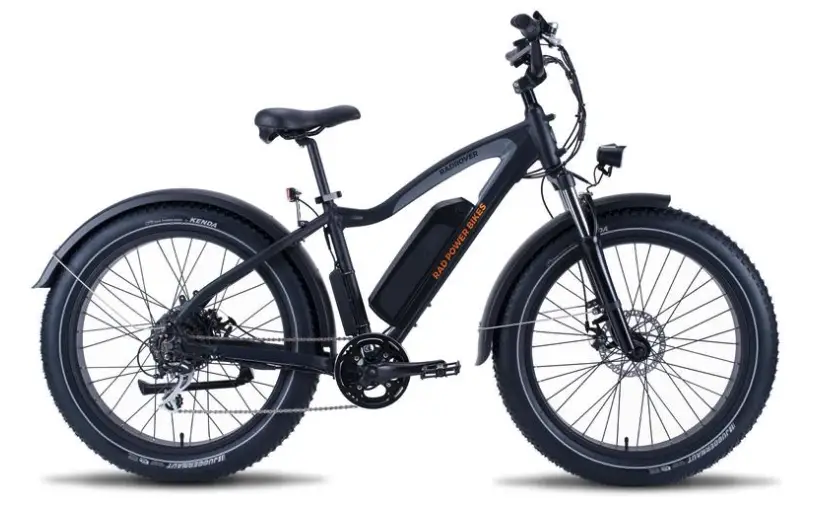
Fat or Skinny Tires
One other decision you might be asked to make is between fat and thin tires. Fat tires have lower pressure and provide greater traction and protection against punctures. These enable an electric bike to perform well on a variety of terrains as well as in inclement weather.
Typically, wider tires are seen on e-mountain bikes, fat tire bikes, and hybrid e-bikes. However, the thickness of the tires has a direct, correlating impact with their weight, and this increased resistance ultimately affects the bike’s speed.
Thin tires are lighter than fat tires because they contain less material. Their higher pressure gives them lower rolling resistance and less traction, making them faster than fat tires. However, one advantage of fat tires is that they’re more durable than skinny tires. In general, thinner tires are best suited for smooth roads.
Make sure to find out if you need special tire inner tubes before you buy!
Proper Care and Maintenance for E-Bike Tires
Good tire maintenance will help any regular or special e-bike tire last longer. The most important thing to do for your e-bike’s tires is keep them properly inflated. Most cyclists understand that tires shouldn’t be underinflated. Unfortunately, however, many overcompensate by overinflating tires.
Low vs High Tire Pressure
Lowering tire pressure improves cornering grip by increasing how much the tire touches the ground. However, a lower-pressure tire also flattens on the road’s surface. This increases rolling resistance and causes you to pedal harder. Fortunately, you can increase pedal assist on your e-bike so this isn’t as much of an issue.
On the other hand, an overinflated tire will seem bouncy, especially on a hard surface, because it bounces off the road’s imperfections. Pedaling a little harder on an e-bike may offset a bumpy, uncomfortable ride, but it’s still best to follow the manufacturer’s tire PSI (pounds of air per square inch) recommendations.
Another common mistake is adding the same PSI on both tires. We make this mistake because we assume our weight distribution is 50-50 front to back. However, bicyclists typically have 40 percent of their weight on the front and 60 percent in the back.
How to Determine Tire Pressure
There is no specific formula for correlating weight distribution and tire pressure, but you can use a ballpark calculation. For example, say you weigh 150 pounds (68 kg). A 40/60 distribution is 60 pounds (27 kg) on the front wheel and 90 pounds (41 kg) on the rear wheel.
A third less pressure on the front might be too much, but 15-20 percent less pressure on the front wheel is reasonable.
Tires lose a few PSI per week. You probably don’t need to check the pressure for every ride, but take out your gauge at least once a week and check the tire pressure. If you recently repaired a flat with carbon dioxide, you’ll almost certainly need to re-inflate it.
Carbon dioxide is very soluble in butyl rubber, and it quickly seeps straight through the tube wall. If you fix a flat with CO² early in a ride, check the tire again in one or two hours because you will most likely need to add pressure.
Riding in the sand? Make sure your electric bike has the best tires and the right maintenance.
Bottom Line
Electric bicycles do not require special tires, although standard tires will wear out faster. The additional and more expensive materials in better quality tires increase the e-bike price. But, if your e-bike comes with standard tires, there’s no need to exchange them.
However, when it comes time to replace them, consider shelling out a few extra dollars for better-performing and longer-lasting e-bike tires.

